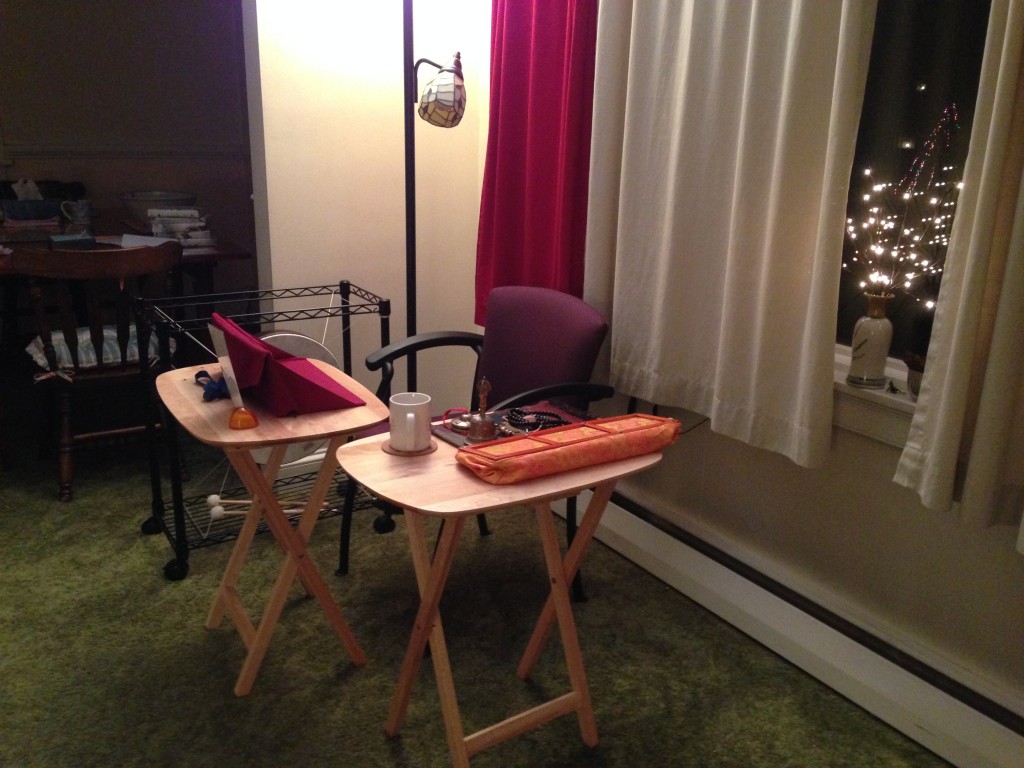I’ve been spending a lot of time in my hometown of Richmond, Virginia, for the last couple of years to help care for my mother, who has Alzheimer’s. She was diagnosed in the last year of my three-year retreat, and I had to move her to assisted living a few months after retreat graduation in 2011. Since then, I’ve been back and forth periodically, and right now I’m in Richmond again, helping her adjust to a recent move to an all-dementia facility, and overseeing major repairs to her house.
Spending time with my mom and other people in her facility, I feel I’ve gained some insight into how to prepare for my own old age and the possibility of dementia. In a nutshell: practice as much as possible, learn to rest my mind wherever I am, and cultivate contentment with whatever is happening. (Corollary: Eat everything. Including parsnips if needed.)
Keeping my Dharma practice on track is extra challenging in new surroundings that are often under active repair, while looking after my mom’s life as well as my own, and without the constant support of Lama Norlha Rinpoche’s example and monastery routine.
I’m finding that an important key is to have a designated space for practice that is always set up. In my mother’s mostly empty house, I have the luxury of using the living room for this purpose, and it also has a handy fireplace mantel for my shrine.
Having the space permanently set up (though easy to take down should the plaster start falling) makes it easy to sit down and practice any time. Of course, I’m very lucky: many people, especially those with minimal space, don’t have the option to designate their living room (or possibly any room) as a permanent practice venue. But maybe there’s a corner where a cushion or chair and practice materials can always be ready and waiting. No fuss, no muss, no excuses, no delay.
Once a physical location is established, the next step is to designate a specific time for practice each day. If it’s on the schedule, it’s likelier to happen than if we wait for all conditions to be in harmony. (Of course, that may happen to you more often than it happens to me.) If our practice is in plain sight on the calendar, at least we have to think about it, which is a major step toward establishing an actual habit.
Finally, once we are seated, we need to locate our mind firmly in the present moment. If we’re doing calm abiding meditation, we bring our awareness to rest on our meditation focus: our breath going in and out, a visual object, sounds, the vastness of space. If we’re practicing Chenrezig, we allow our mind to be immersed in our visualization, the words of the text and the mantra, rather than our customary thoughts, memories, and plans.
Each new year is an opportunity to refresh our priorities along with our resolution to see them through. On a smaller scale, a similar opportunity arises at the start of every day, and even in every moment. Having a plan in place greatly increases the odds that we’ll be able to seize these opportunities as they arise rather than continually lose momentum in the daily fray.
I’m not ready to make any resolutions about parsnips this year, but thanks to the time I’ve invested in the infrastructure of my practice, I am definitely spending more time in my meditation chair.
Happy New Year!

